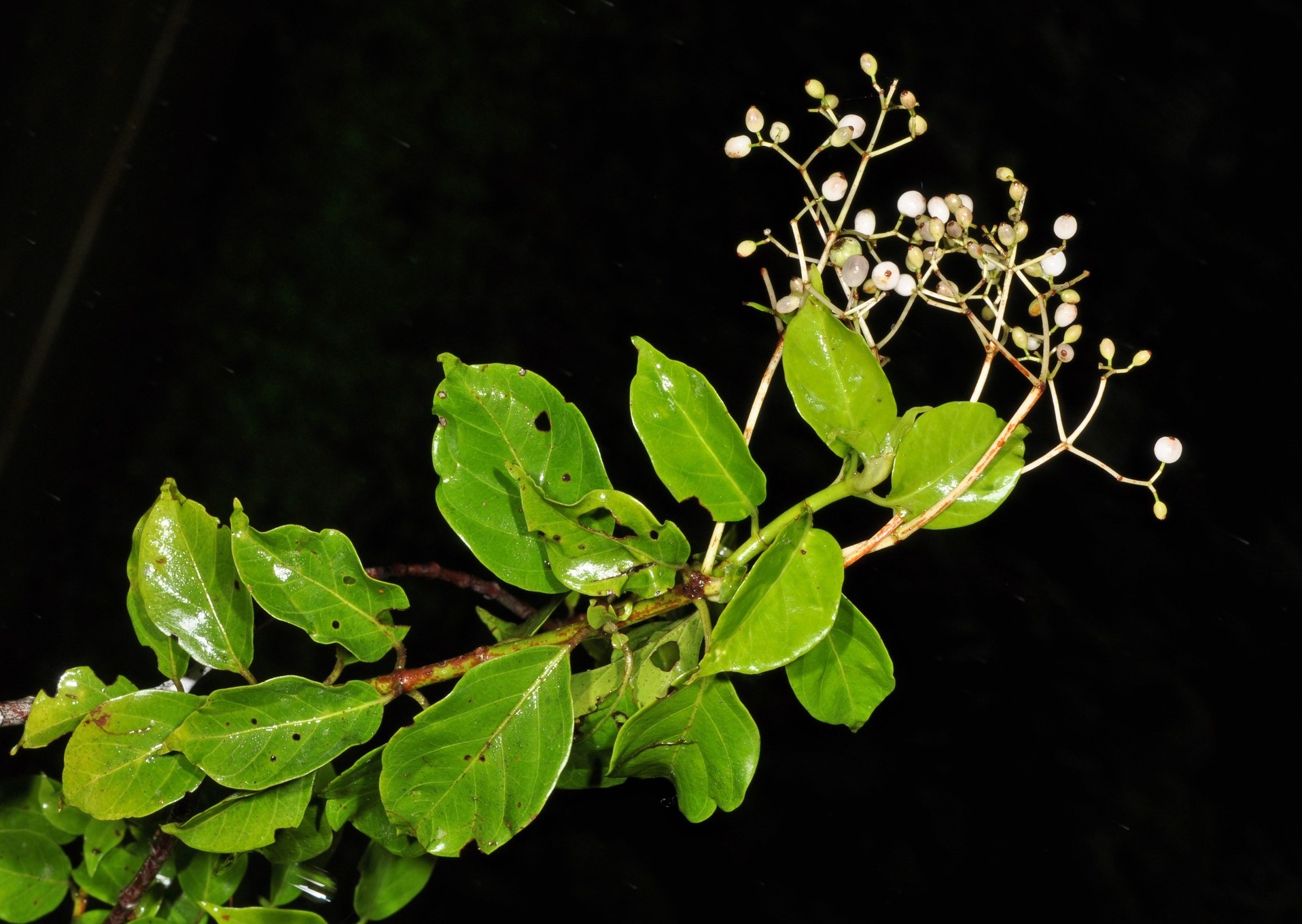Psychotria microphylla

|
|
Psychotria microphylla Common Names: Small-leaved Psychotria, African coffee
shrub Scientific
Classification Kingdom: Plantae Clade: Tracheophytes Clade: Angiosperms Clade: Eudicots Clade: Asterids Order: Gentianales Family: Rubiaceae Genus: Psychotria Species: P. microphylla Synonyms: Grumilea microphylla Hook.f., Morphological Description Psychotria microphylla is a small, evergreen shrub or undershrub, typically growing
0.5–2 meters tall, adapted to the understory of tropical forests. Its key
characteristics include: · Stems: Slender, glabrous or slightly pubescent, green when young,
becoming woody with age; often branching near the base (Burkill, 1995). · Leaves: Opposite, elliptical to oblong (2–6 cm × 1–3 cm), glossy
green, with entire margins; petioles short (0.5–1 cm); stipules small,
caduceus. · Flowers: Small, tubular, whitish to cream (3–5 mm long), arranged in
compact axillary or terminal inflorescences; corolla 5-lobed, fragrant; bloom
seasonally (Plants of the World Online, n.d.). · Fruit: Berry-like drupes (4–6 mm diameter), green turning red to
dark purple when mature, containing 1–2 seeds; dispersed by birds. Distribution and Habitat Psychotria microphylla is native to tropical Africa, thriving in shaded, humid
environments: · Geographic Range: Found in West and Central Africa,
including Nigeria, Cameroon, Ghana, Ivory Coast, and extending to Sudan and
Tanzania; prevalent in southern Nigeria’s rainforest zones (Kew Science, n.d.). · Habitat: Grows in the understory of lowland rainforests, moist woodlands,
and well-structured secondary forests; prefers fertile, well-drained, loamy
soils (pH 5.0–6.5) with annual rainfall of 1,500–3,000 mm; occurs at elevations
up to 800 m. · Ecological Role: Supports pollinators like bees and
butterflies; fruits are consumed by birds, aiding seed dispersal; contributes
to understory biodiversity (Burkill, 1995). Ethnopharmacology Psychotria microphylla is a Nigerian
medicinal plant traditionally used for treating infections and liver-related
ailments, and recent scientific studies support these uses by showing that its
leaves contain bioactive compounds such as quercetin, gallic acid, flavonoids,
tannins, and saponins. Extracts of the plant demonstrate strong antioxidant and
hepatoprotective effects, improving liver function and reducing oxidative
stress in experimental models, while also showing antimicrobial activity
against certain bacterial pathogens. Although early toxicity studies suggest
the extract is generally safe in mammals, the plant has demonstrated piscicidal
effects in aquatic organisms, indicating the need for careful dosage
considerations.. · Antimicrobial: In Nigeria, leaf decoctions treat infections. Ethanol leaf
extracts inhibited Escherichia coli, Vibrio cholerae, and Aeromonas hydrophila (MIC: 0.5–1 mg/mL) from aquatic environments, attributed to
flavonoids, tannins, and alkaloids; showed comparable efficacy to ciprofloxacin
(Ude et al., 2021). · Wound Healing: In Nigeria, leaf pastes are applied to wounds. The
antimicrobial properties of leaf extracts support tissue repair, though
specific studies on wound closure are lacking (Agyare et al., 2014). · Gastrointestinal Relief: In Cameroon, leaf infusions manage stomach
aches. · Antipyretic Potential: In Nigeria, leaves are used for fever.
While not directly studied, related Psychotria species show antipyretic activity via alkaloids, suggesting
possible efficacy (Calixto et al., 1998). · Piscicidal Activity: In Nigeria, leaf extracts are used to
eradicate aquatic predators. Extracts were toxic to young Clarias gariepinus (catfish) in a dose- and time-dependent
manner, indicating potential use in aquaculture (Fafioye, 2012). ⚠ Toxicity Profile: Psychotria microphylla may contain psychoactive or toxic
alkaloids, as seen in related Psychotria species. Ethanol leaf extracts showed toxicity to Clarias gariepinus at high concentrations, suggesting
potential toxicity to other organisms. No acute toxicity data (LD₅₀) exists for
mammals, but chronic use may cause liver enzyme elevation, as observed in
related species (ALT increased by 10% after 30 days). Use is contraindicated in
pregnancy and for children due to insufficient safety data. Potential heavy
metal contamination in wild-harvested plants requires caution (Fafioye, 2012;
Awounfack et al., 2016). Additional Uses · Aquaculture: Leaf extracts are used in Nigeria to control aquatic
predators in fishponds, leveraging their piscicidal properties (Fafioye, 2012). · Ecological: Enhances understory biodiversity in rainforests; supports
pollinators and seed-dispersing birds. · Cultural: Limited documentation suggests potential ritual use in
Nigeria for spiritual cleansing, similar to other Psychotria species (Burkill, 1995). References
External Links More Pictures |
|
| Compounds of Psychotria microphylla | |
| References |